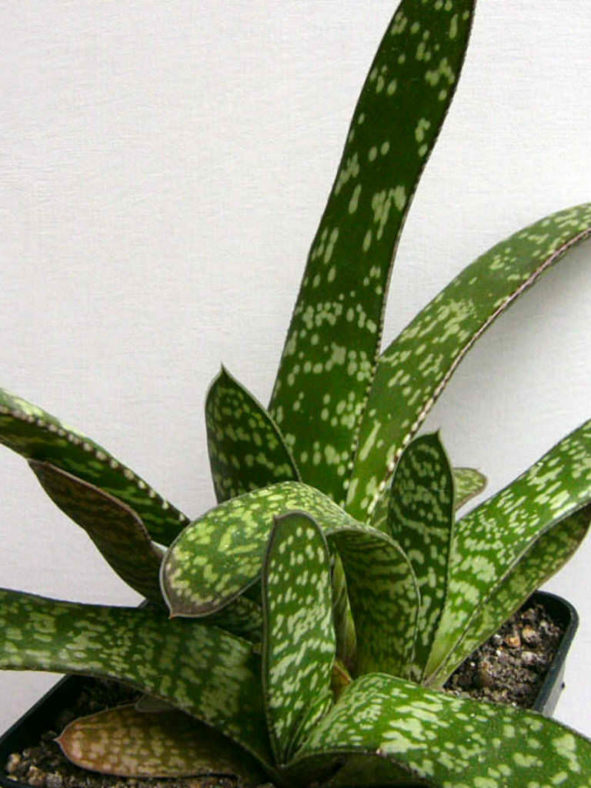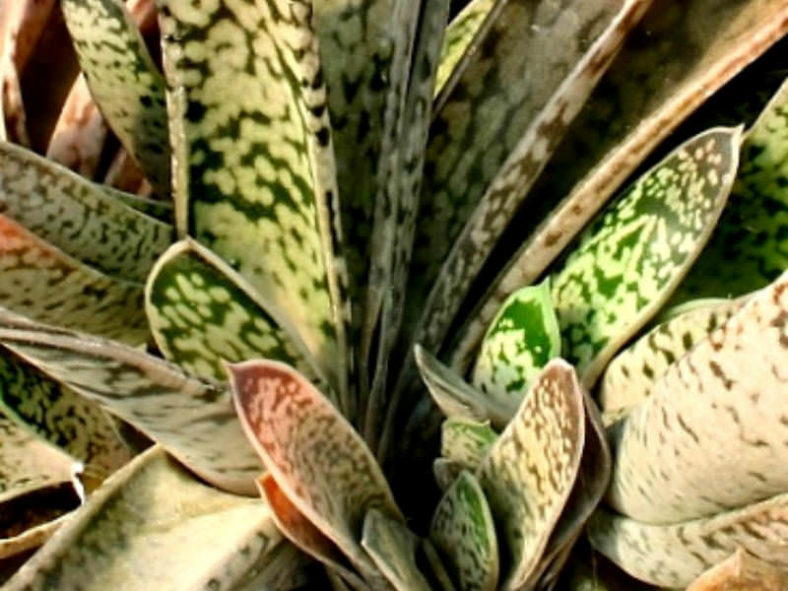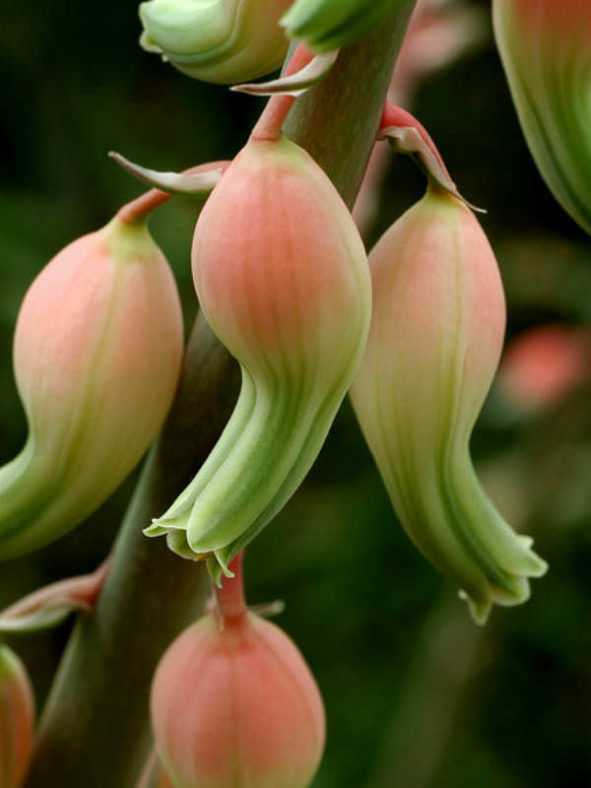Scientific Name
Gasteria bicolor Haw.
Common Name(s)
Lawyer's Tongue
Synonym(s)
Gasteria bicolor var. bicolor, Gasteria obliqua
Scientific Classification
Family: Asphodelaceae
Subfamily: Asphodeloideae
Tribe: Aloeae
Genus: Gasteria
Etymology
The specific epithet "bicolor" (pronounced "BY-kul-ur") means "of two colors or having two colors" and refers to the bicolored leaves.
Origin
Gasteria bicolor is native to South Africa (Eastern Cape).
Description
Gasteria bicolor, also known as Gasteria obliqua, is a highly variable succulent that typically forms rosettes but can occasionally be distichous, particularly in cultivation. It is common in cultivation and can grow up to 20 inches (50 cm) tall. It produces multiple proliferous stems, all covered in untidy masses of fleshy, mottled leaves. The leaves have a sharp point at the tip and occasionally can develop a keel.
The bell-shaped flowers are pink to orange and green, and can measure up to 0.8 inches (2 cm) in length. They appear on slender stalks that can reach 5 feet (1.5 m) in length. Although the plant can be in flower at almost any time of the year, it is often at its peak from mid-winter to spring.
Varieties of Gasteria bicolor

Hardiness
USDA hardiness zones 9b to 11b: from 25°F (-3.9°C) to 50°F (10°C).
How to Grow and Care
Gasterias are often grouped with Haworthia because the plants have similar cultural requirements. Both are attractive, small succulents that can tolerate somewhat more shade than many succulents, making them more suitable as houseplants. Gasterias are susceptible to fungal infections, which usually appear as black spots on the leaves. These result from too much humidity or water on the leaves, but they should not spread too quickly. Gasterias have a natural defense mechanism against such fungal attacks, and they attack the invading organism and seal off the wounded spot. Generally, any place where Haworthia and Aloe thrive will be hospitable to a Gasteria.
Gasterias are small, shallow-rooted, and relatively slow-growing. Therefore, they are often grown in small clusters in wide, shallow pots. Over time, clusters will naturally enlarge as the mother plant sends off small plantlets. When the cluster has outgrown its pot, repot it into a new, wide, shallow pot with fresh potting soil in the spring or early summer. This is also the time to take offsets for propagation.
See more at How to Grow and Care for Gasteria.
Links
- Back to genus Gasteria
- Succupedia: Browse succulents by Scientific Name, Common Name, Genus, Family, USDA Hardiness Zone, Origin, or cacti by Genus
Photo Gallery
Click on a photo to see a larger version.


